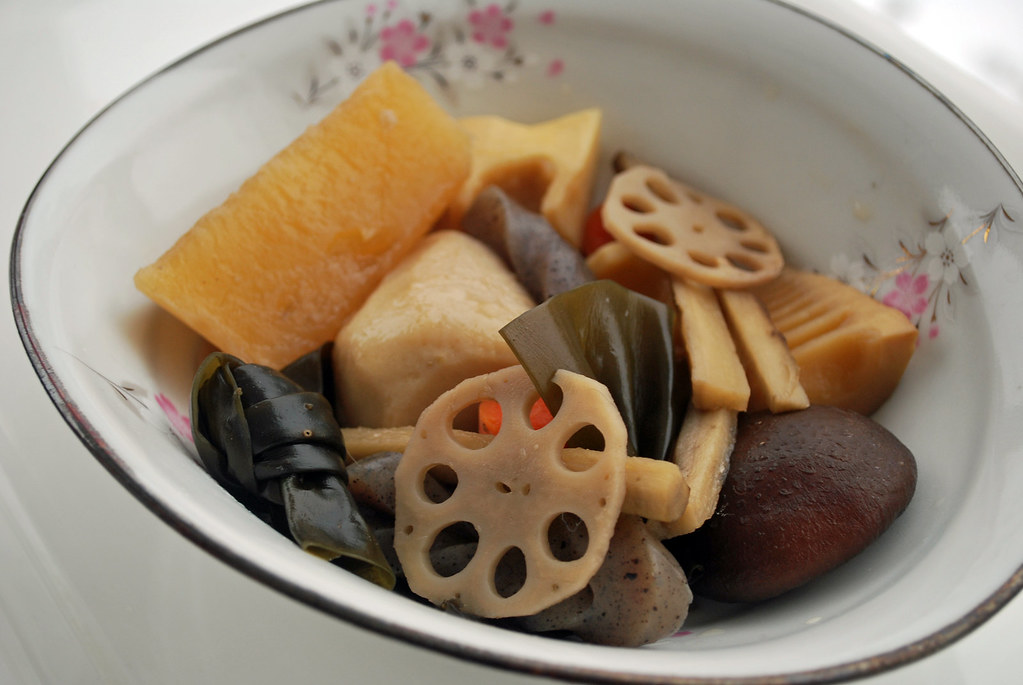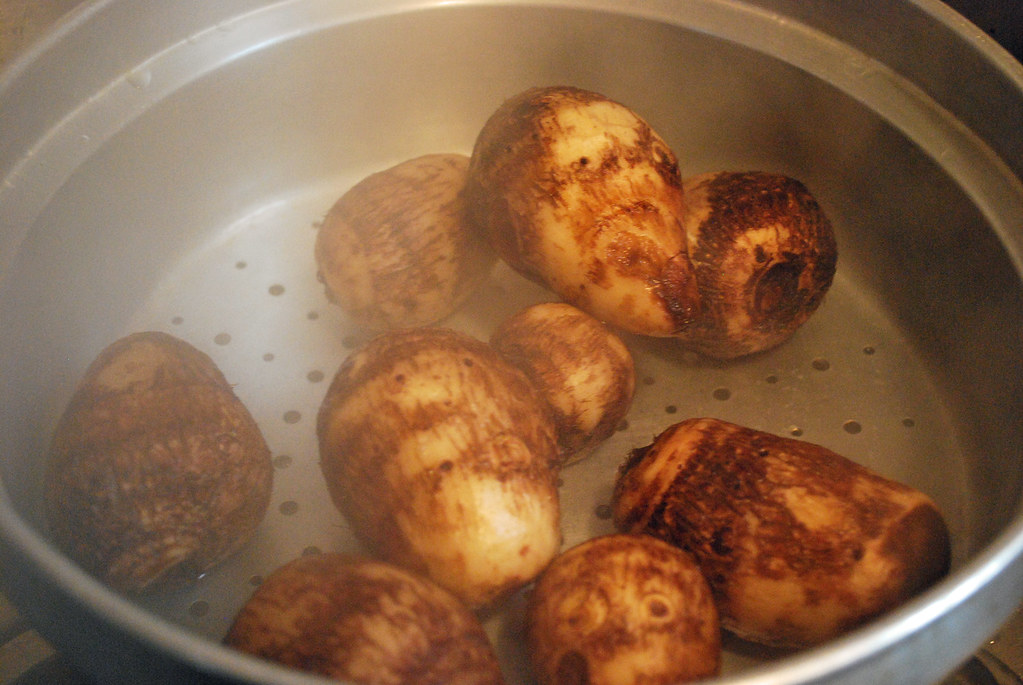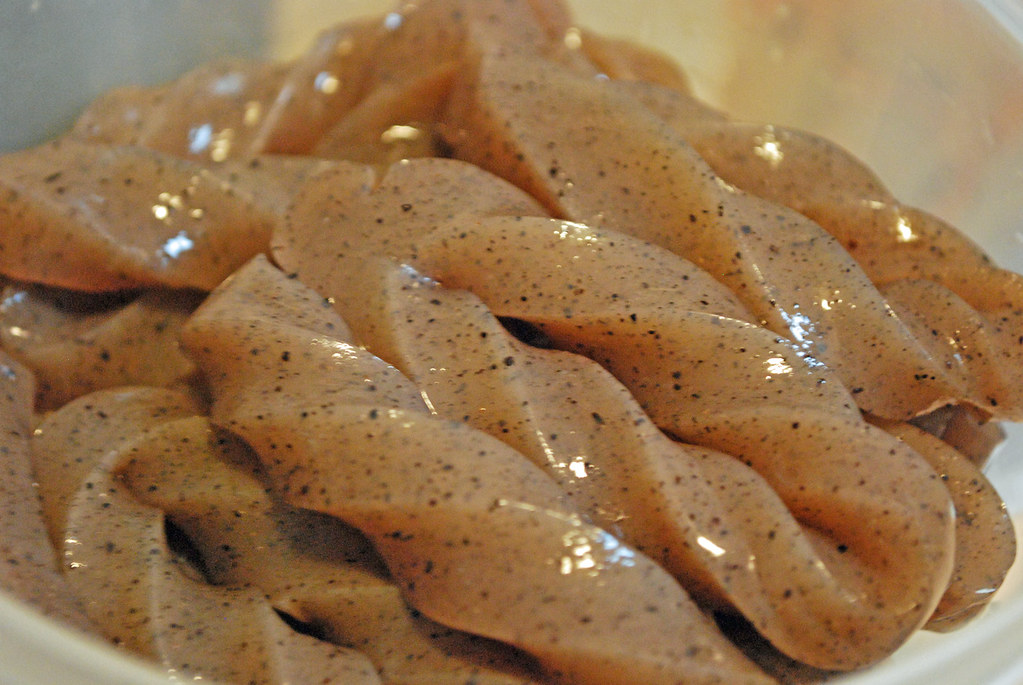Nishime
After some car problems mixed with procrastination, the main dish for our Japanese New Year's Eve meal was ready on New Year's Day.
Nishime is one of ~10 dishes my mother made each year to celebrate the New Year.
Each vegetable is cooked separately, then put together in a pot and simmered shortly before it is served. This is pretty much all I recall from my mother's preparation. The recipe here is a vague recollection, since I was never present for the entire preparation of this dish and all of her recipes ceased to exist when she passed.
For my nishime this year, I used:
7 dasheen (taro), boiled then peeled, whole
1 gobo, julienne (burdock root)
1 sheet dried kombu, rehydrated (kelp)
1 daikon, chopped in large chunks
2 c carrots, chopped
2 bamboo shoots, halved
1 konnyaku block with seaweed
pork tenderloin, sliced bite-size (~4 oz) -- this can be left out for a pescatarian meal
5 shiitake, rehydrated (save the water)
1 c lotus root (precooked and sliced, since I couldn't find fresh)
This is the only time of year that I buy and cook dasheen, since I haven't explored any other use for these potatoes.
While the dasheen is being boiled in water, wash the uncooked white rice in water and set the starchy water aside.
After the gobo has been scrubbed and cut into matchsticks, place them into the starchy rice water to soak for ~10 minutes to further cleanse. The cloudy white water will turn brown. Rinse and drain before boiling in 2 c water with ~1/2 c shoyu and ~1/4 c mirin.
The kombu should be pliable after being soaked for ~10 min and washed. You would typically just brush off the kombu instead of wasting the water, but the packet I bought had a really thick coat of white powder.
If they are in wide strips, cut the kelp lengthwise into 2" wide strips. Since the seaweed is slippery, long strips make it easier to grip. Tie a row of tight simple knots leaving enough room, approximately 2", between each knot. Cut between each knot. Trim off excess kombu. Boil in water until a chopstick can poke through the knot with some ease.
Simmer the large chunks of daikon in water, shoyu, and mirin until cooked (somewhat translucent and yellowish from the broth). The broth is similar in proportion as above (2:1/2:1/4). Liquid should cover the daikon.
Steam carrots and bamboo shoots separately until cooked.
When preparing the konnyaku, I should have taken pictures of each step, since this will be hard to explain. You don't have to serve it in the manner I am about to describe. Plain slices are fine, as well as shirataki.
Wash the konnyaku cake. Lay the cake flat and cut along the short edge in 1/2" slices. The slices should be ~3" in length.
Lay each slice flat on the cutting board and cut a slit down lengthwise in the center, starting 1/4" from the top and stopping 1/4" from the bottom.
Take the top (short) edge, slide it in the slit, and pull up gently from the other side. Set aside.
Base (approximate measurements):
shiitake steeped water
4-5 c water
1/2 c kombu, leftover from trimming
1 c katsuobushi (shaved, dried tuna that comes in clear packets and look like wood curls)
1 c shoyu
1/4 c mirin
For the base, drain the rehydrated shiitake water in a pot, kombu, and water, and heat until it boils. Turn off heat and add katsuobushi. Steep for ~10 minutes. Strain the broth and throw out what remains in the strainer.
Turn heat up to simmer the broth and add shoyu and mirin. Adjust to taste. Line the shiitake along the bottom of the pot, then the potatoes, daikon, and konnyaku. Then add the remaining ingredients. Simmer for ~10 minutes. Mix the ingredients, simmer for 5 more minutes, then serve.
There is nothing wrong with the broth, but my mother did not serve the dish with the broth.
The flavor isn't overly fishy as one would imagine. The broth takes on the flavor of kombu and daikon with a bit of shoyu. Bug isn't too keen on this dish, but he humored me by eating a bowl. He couldn't describe why, it just wasn't his thing. It reminds me of my mother.
- Cassaendra









0 deep thoughts:
Post a Comment